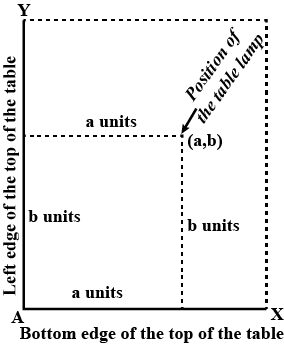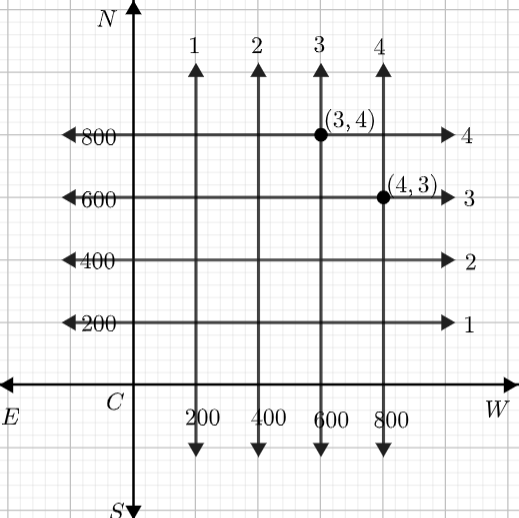NCERT Solutions Class 9 Maths
Chapter – 3 (Coordinate Geometry)
The NCERT Solutions in English Language for Class 9 Mathematics Chapter – 3 Coordinate Geometry Exercise 3.1 has been provided here to help the students in solving the questions from this exercise.
Chapter 3: Coordinate Geometry
Exercise – 3.1
1. How will you describe the position of a table lamp on your study table to another person?
Answer – The position of the table lamp is at a distance of a units from the left edge of the top of the table and at a distance b units above the bottom edge of the top of the table. We have marked the bottom edge as the line AX and the left edge as the line AY. Here AY ⊥ AX. We measure all distances along AX and AY from the corner A. The position of the lamp can be described as (a, b). The position of the lamp can be described as (a, b)

2. (Street Plan): A city has two main roads which cross each other at the centre of the city. These two roads are along the North-South direction and East-West direction. All the other streets of the city run parallel to these roads and are 200 m apart. There are 5 streets in each direction. Using 1cm = 200 m, draw a model of the city in your notebook. Represent the roads/streets by single lines.
There are many cross-streets in your model. A particular cross-street is made by two streets, one running in the North-South direction and another in the East-West direction. Each cross street is referred to in the following manner: If the 2nd street running in the North-South direction and 5th in the East-West direction meet at some crossing, then we will call this cross-street (2, 5). Using this convention, find:
(i) how many cross-streets can be referred to as (4, 3)?
(ii) how many cross-streets can be referred to as (3, 4)?
Answer –

(i) Only one street can be referred to as (4,3) (as clear from the figure).
(ii) Only one street can be referred to as (3,4) (as we see from the figure).

Leave a Reply